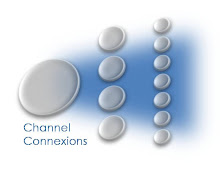The first is the relationship between you (and your channel partner) and your end user. The second is between you and your channel partner. How you manage and market within these relationships is very different and requires very different approaches.
In the first case, companies typically establish a designation structure...usually with multiple tiers. For the sake of argument, let's say they use precious metals (platinum, gold, silver). The end user can choose their solution provider and understand that the vendor/manufacturer has recognized the channel based on some sort of achievement. In theory, a Platinum partner has achieved a greater standing with the vendor/manufacturer than a Silver partner, and therefore, offers some additional value to the end user.
Channel managers will work to build a channel ecosystem based on these designations. It is not uncommon for their to be a greater number of Silver partners than Gold partner, and, likewise, a greater number of Gold partners than Platinum partners. The result is a pyramid of designations:
 (more on this strategy later...there might be a better way to think of the Pyramid)
(more on this strategy later...there might be a better way to think of the Pyramid)The second category of relationships that require the attention of the channel leader is between you and your channel community. I don't think that same designation structure is useful in this category because it really says nothing about loyalty and the change in relationship over time. As such, you might have an extremely loyal Gold partner whose relationship is getting stronger over time versus a Platinum partner whose relationship (for whatever reason) is fading. How you market to these channel partners should be very different and really has very little to do with their external designation brand.
Channel Managers should consider another way to classify their partner community when managing this category of relationship. It should be based on loyalty, and more importantly, on the change of loyalty over time. The relationship map would look like this:
 Very different than the traditional pyramid structure used in managing relationships with the end user. The basic concept is that how you sell and market to a Fader should be very different than how you sell and market to an Up & Comer...regardless of their external designation.
Very different than the traditional pyramid structure used in managing relationships with the end user. The basic concept is that how you sell and market to a Fader should be very different than how you sell and market to an Up & Comer...regardless of their external designation.Most companies tend to focus on the pyramid and do not have the infrastructure and data to effectively manage "the curve".




1 comment:
Great post especially for vendors building channel sales strategy.
Post a Comment